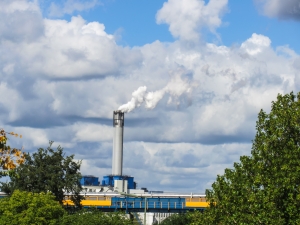Economic Sectors That Fare Worst and Best
The Worst Jobs
By growth of employees and salary growth, the worst jobs in Canada are laborer, foundry worker, office clerk, printing machine operator, and harvesting laborer. Some jobs, for example, packing and harvesting are made redundant due to automation and mechanization.
Canada’s Strongest Industries
By GDP, some of the strongest industries in Canada are construction, quarrying, public administration, and health care. Among the fastest growing industries are engineering, industrial and commercial machinery, computer systems design, and apparel manufacturing. The service sector is one of the largest in Canada, including industries such as healthcare, education, and retail. It accounts for some 80 percent of GDP. The technology industry is also one of the strongest economic sectors, encompassing internet services, e-commerce, wireless infrastructure, and digital media. Canada is also a leader in gas and oil extraction, mining, and processing. The mining sector is one of the biggest employers in the country. Construction is also among the top industries, with sectors such as:
• Land subdivision
• Industrial building construction
• Non-residential building construction
• Wall covering and painting
• Drywall and insulation
• Building finishing
• Escalator and elevator installation
• Air-conditioning, heating, and plumbing
• Siding and roofing
• Etc.
Manufacturing, Trends and Leading Sectors
 Manufacturing has a strong presence, with companies producing consumer and industrial goods. The main sub-sectors are transportation equipment, textiles, electronics, machinery, plastics and chemicals, and others. According to some finance experts, the manufacturing industry is in decline. They call it the Dutch Disease. This phenomenon can be explained with soaring energy prices worldwide. A research study at the Institute for Research on Public Policy, however, reveals that industries such as machinery and equipment, metals, and food are largely unaffected. Economic sectors such as apparel manufacturing and textiles are more affected. Two factors explain the decline in manufacturing in Canada – the growth of high tech and currency appreciation. Labor productivity also fell due to multi-factor productivity and investment in infrastructure and machinery that increases output.
Manufacturing has a strong presence, with companies producing consumer and industrial goods. The main sub-sectors are transportation equipment, textiles, electronics, machinery, plastics and chemicals, and others. According to some finance experts, the manufacturing industry is in decline. They call it the Dutch Disease. This phenomenon can be explained with soaring energy prices worldwide. A research study at the Institute for Research on Public Policy, however, reveals that industries such as machinery and equipment, metals, and food are largely unaffected. Economic sectors such as apparel manufacturing and textiles are more affected. Two factors explain the decline in manufacturing in Canada – the growth of high tech and currency appreciation. Labor productivity also fell due to multi-factor productivity and investment in infrastructure and machinery that increases output. The manufacturing industry employs over 1.8 million Canadians. Workers enjoy higher wages compared to the national average. In terms of sales volume, the leading industries include primary metals, petroleum and coal products, food products, and transportation equipment. Some 80,000 plants and facilities operate on the territory of Canada. What is more, over 50 percent of the manufacturers plan to invest in research and development, plants, equipment and machinery, and facilities. They work in different sectors of the economy, including shipbuilding, medical devices, pharmaceuticals, plastics, and chemicals. The automotive industry produces and exports components and parts as well as vehicles such as school and transit buses, trucks, vans, and cars. There are many assembly plants in Canada, located in Woodstock, Alliston, Oshawa, Oakville, and other cities. The pharmaceutical industry is also well developed in Canada. Companies invest in clinical trial programs, manufacturing, facilities, and research and development. Research centres and manufacturers are focused on vaccine development, infectious and neurological diseases, as well as chronic conditions such as cancer. Other sectors of the economy that are worth mentioning include industrial marine, rubber, and deference.
Agriculture: the Loser or Winner?
Agriculture is one sector that accounts for a small percentage of GDP compared to other industries. Farmers receive government subsidies similar to EU countries. At the same time, Canada is one of the main producers and exporters of wheat. Canadian farmers grow crops such as corn, barley, rye, and oats and oil seeds such as flaxseed and canola. Farmers also grow field crops such as soybeans, lentils, dry peas, chick peas, and dry beans. Canada also has preferential access to large markets such as the U.S. and EU, with a total population of some 800 million. The export of pork has increased, making Canada the third-biggest exporter. The country also exports hogs and cattle to the U.S.